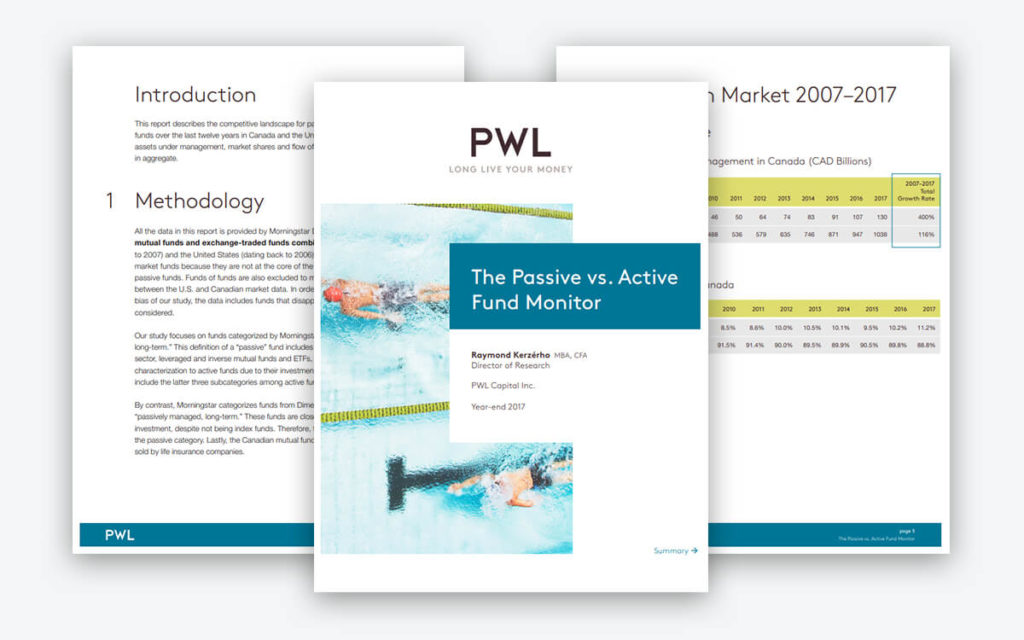This report describes the competitive landscape for passively and actively managed funds over the last twelve years in Canada and the United States.
In 2017, Canadian passive funds increased their market share from 10.2% to 11.2% on the back of a positive flow of nearly $13 billion. Meanwhile, Canadian active funds attracted $18 billion. Over the same period, passive funds increased their share of the U.S. market from 32% to 35%. U.S. passive funds attracted $663 billion, a sixth consecutive record. Active funds attracted an inflow of $23 billion.
Since 2007–2008, Canadian passive funds have doubled their market share, from 5.2% to 11.2%, and attracted $70 billion in net new money, compared to $75 billion for active funds. Since 2006–2007, U.S. passive funds have more than doubled their market share, from 16% to 35%, and attracted a net money flow of $3.4 trillion, compared to a modest $887 billion for active funds.
Overall, passive funds are gaining ground in both Canada and the U.S. with the help of steady inflows of money. However, the Canadian passive fund industry remains small relative to the one in the U.S., where passive funds have grown at a frenzied pace. We believe the rise of passive funds in general, and the corresponding decline of active funds, represents a significant transfer of wealth from the financial services industry to the end investors. Assuming that passive funds charge, on average, a management expense ratio that is 1% lower, this means that $1.3 billion CAD and $63 billion USD are saved annually by Canadian and U.S. investors. These savings naturally represent an equal amount in loss of revenue for the investment fund industry.
